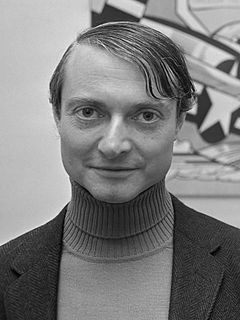
Roy Fox Lichtenstein was an American pop artist. During the 1960s, along with Andy Warhol, Jasper Johns, and James Rosenquist among others, he became a leading figure in the new art movement. His work defined the premise of pop art through parody. Inspired by the comic strip, Lichtenstein produced precise compositions that documented while they parodied, often in a tongue-in-cheek manner. His work was influenced by popular advertising and the comic book style. His artwork was considered to be "disruptive". He described pop art as "not 'American' painting but actually industrial painting". His paintings were exhibited at the Leo Castelli Gallery in New York City.
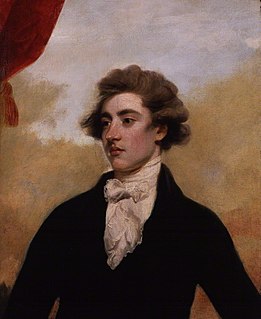
William Thomas Beckford was an English novelist; an art collector and patron of works of decorative art, a critic, travel writer, plantation owner and sometime politician, reputed at one stage to be the richest commoner in England. The son of William Beckford and Maria Hamilton, daughter of the Hon. George Hamilton, he served as a Member of Parliament for Wells in 1784–1790 and Hindon in 1790–1795 and 1806–1820. He is remembered as author of the Gothic novel Vathek (1786), builder of the lost Fonthill Abbey in Wiltshire and of Lansdown Tower in Bath, and above all for his art collection.

Louis-François Roubiliac was a French sculptor who worked in England, one of the four most prominent sculptors in London working in the rococo style, He was described by Margaret Whinney as "probably the most accomplished sculptor ever to work in England".
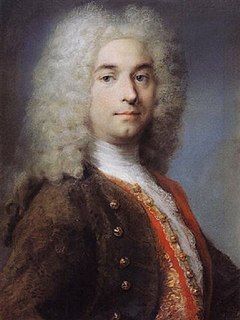
Pierre Crozat (1665–1740) was a French financier, art patron and collector at the center of a broad circle of cognoscenti; he was the brother of Antoine Crozat.

Judith Beheading Holofernes is a painting of the biblical episode by Caravaggio, painted in c. 1598–1599 or 1602. The widow Judith first charms the Assyrian general Holofernes, then decapitates him in his tent. The painting was rediscovered in 1950 and is part of the collection of the Galleria Nazionale d'Arte Antica in Rome. The recent exhibition 'Dentro Caravaggio' Palazzo Reale, Milan, suggests a date of 1602 on account of the use of light underlying sketches not seen in Caravaggio's early work but characteristic of his later works. The exhibition catalogue also cites biographer artist Giovanni Baglione's account that the work was commissioned by Genoa banker Ottavio Costa.

An art auction or fine art auction is the sale of art works, in most cases in an auction house.
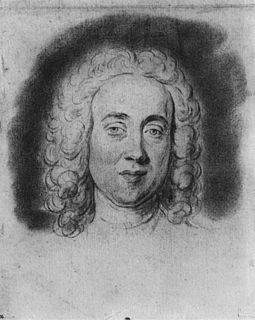
Pierre-Jean Mariette was a collector of and dealer in old master prints, a renowned connoisseur, especially of prints and drawings, and a chronicler of the careers of French Italian and Flemish artists. He was born and died in Paris, and was a central figure in the artistic culture of the city for decades.
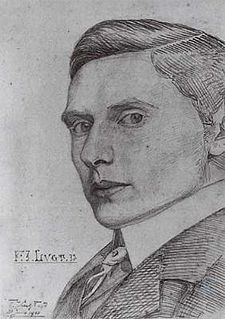
Frederik Johannes "Frits" Lugt, was a self-taught collector and connoisseur of Dutch drawings and prints and a selfless and tireless compiler of essential reference tools documenting Northern European prints and drawings, collectors' stamps and sale catalogues. An authority on Rembrandt's drawings, he collected all of the known etchings made by Rembrandt during his career.

Water Lilies is a series of approximately 250 oil paintings by French Impressionist Claude Monet (1840–1926). The paintings depict his flower garden at his home in Giverny, and were the main focus of his artistic production during the last thirty years of his life. Many of the works were painted while Monet suffered from cataracts.
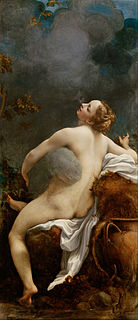
The Orleans Collection was a very important collection of over 500 paintings formed by Philippe d'Orléans, Duke of Orléans, mostly acquired between about 1700 and his death in 1723. Apart from the great royal-become-national collections of Europe it is arguably the greatest private collection of Western art, especially Italian, ever assembled, and probably the most famous, helped by the fact that most of the collection has been accessible to the public since it was formed, whether in Paris, or subsequently in London, Edinburgh and elsewhere.
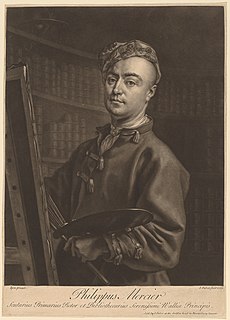
Philippe Mercier was a French painter and etcher, who lived principally and was active in England. He was born in Berlin of French extraction, the son of a Huguenot tapestry-worker. He studied painting at the Akademie der Wissenschaften of Berlin and later under Antoine Pesne, who had arrived in Berlin in 1710. Later, he travelled in Italy and France before arriving in London—"recommended by the Court at Hannover"—probably in 1716. He married in London in 1719 and lived in Leicester Fields.
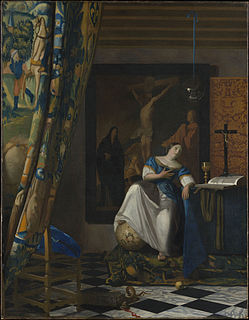
The Allegory of Faith, also known as Allegory of the Catholic Faith, is a Dutch Golden Age painting by Johannes Vermeer from about 1670–1672. It has been in the Metropolitan Museum of Art in New York since 1931.
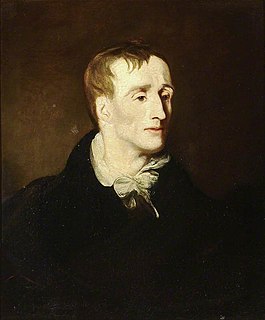
William Young Ottley was a British collector of and writer on art, amateur artist, and Keeper of the Department of Prints and Drawings at the British Museum. He was an early English enthusiast for 14th- and 15th-century Italian art, or the "Italian Primitives" as they were then often called. He spent the 1790s based in Rome, where he bought much art; this was sold for a considerable profit in 1801 after his return to London.
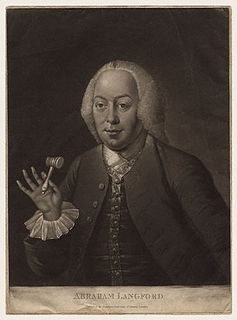
Abraham Langford (1711–1774) was an English auctioneer and playwright.
Jacob Abrahamsz. Dissius was a Dutch typographer and printer. He is most notable as an art collector and for his links to Johannes Vermeer - his collection included 21 Vermeer works and in 1680 he married Madgdalene, daughter and sole heir of Vermeer's main patron Pieter van Ruijven. Dissius died in 1695 and his collection was auctioned off in Amsterdam the following year.

Lincoln in Dalivision is an original limited edition lithograph created by Salvador Dalí. It is often considered one of the most counterfeited Dalí lithographs. Dalí authentication experts who have noted the counterfeiting issue with this work include Albert Field, Frank Hunter, Robert Descharnes and Bernard Ewell. Lee Catterall comments in his book The Great Dalí Art Fraud & other deceptions, "The painting most commonly reproduced for such fraudulent purposes was Lincoln in Dalivision, 'prints' of which Los Angeles art appraiser Dena Hall testified in the Hawaii trial have become as commonplace as 'pancakes at the pancake house.'"
William Meriton Eaton, 2nd Baron Cheylesmore is best remembered as a leading collector of English mezzotint portraits, and collector of other art. His mezzotints and other prints, over 10,000 in number, were left to the British Museum, and five oil paintings to the National Gallery, London. He also stood unsuccessfully for Parliament for the Conservative Party at Macclesfield in 1868, 1874 and 1880, and held a nominal partnership in the family silk business.
John Blackwood was a Scottish merchant who early in his life was a slave trader in New Spain and a politician who sat in the House of Commons briefly from 1727 to 1728. Later he became a noted and sought-after art dealer. He was based in London but travelled widely on the Continent, and was one of the first dealers to introduce the works of Murillo to Britain.
Christopher Cock was an eminent English auctioneer and picture restorer who lived and worked in London. His earliest known auction was in 1717. He operated from various premises in Soho until 1731, when he moved to the Great Piazza, Covent Garden. Cock was auctioneer of the properties and possessions of many well-known men of the time. He was married to Ann, but nothing more is known of his wife or any children; Cock died in 1748 and is buried at St Paul's, Covent Garden.















